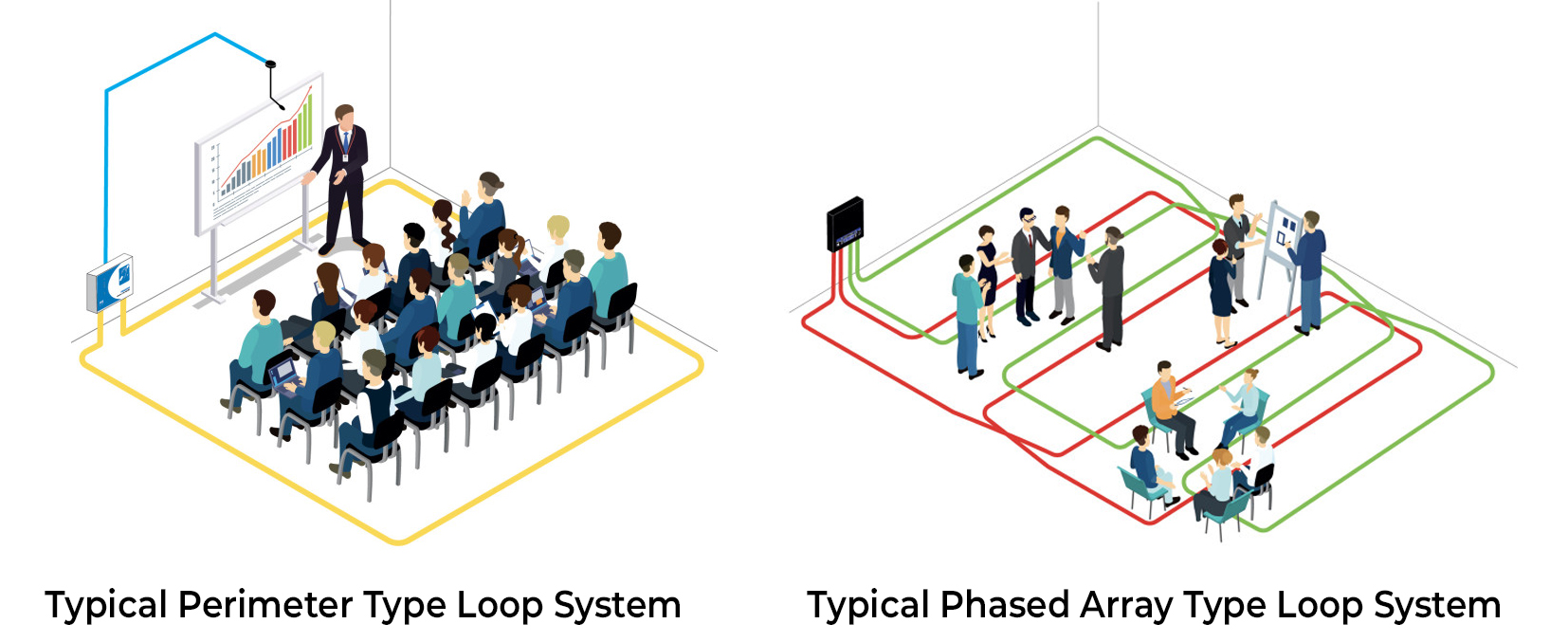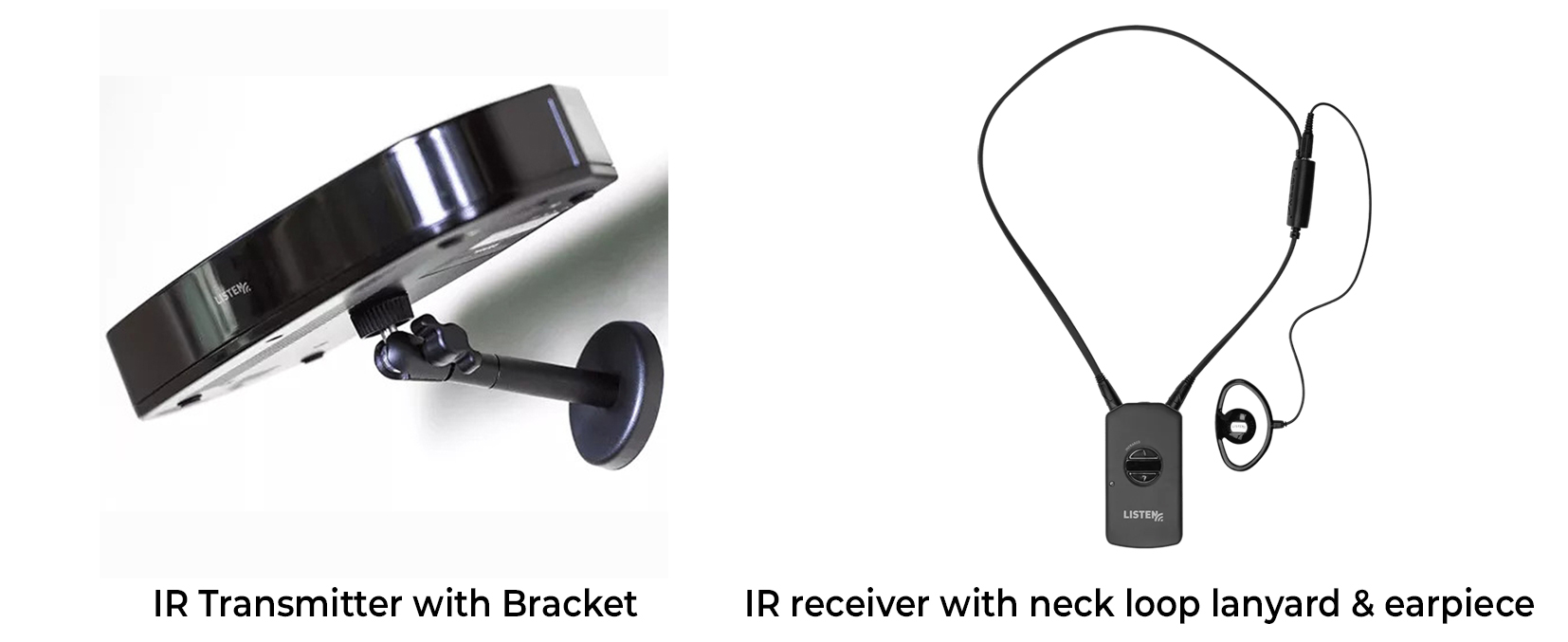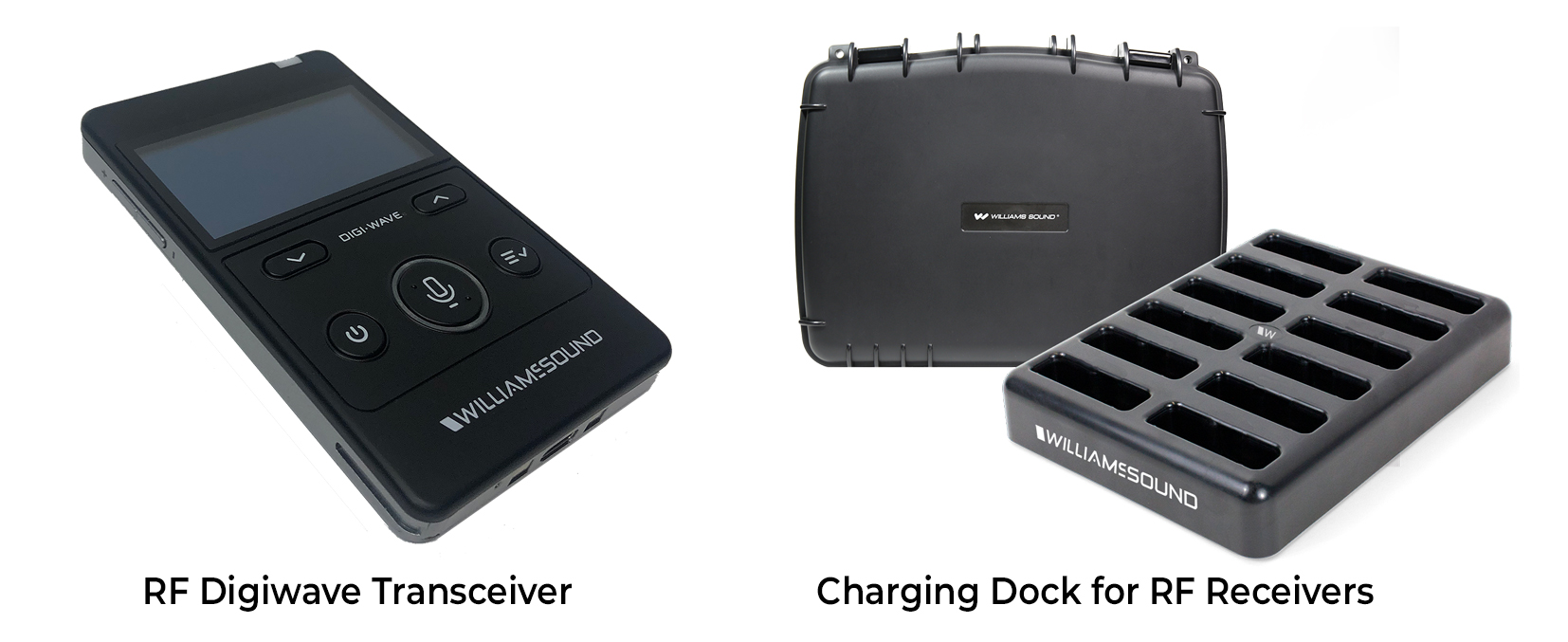Here, we explain a little about the different assistive listening systems currently available & their potential advantages / disadvantages. You can download the guide for future reference. Further guides are available from the ISCVE - the institute of Sound, Communications & Visual Engineers. Please see the links at the bottom of the page.
These days it’s widely understood that an assistive listening system can provide great benefits to hearing aid users when the spoken word needs to be clearly transmitted, especially in acoustically challenging buildings and in rooms where there maybe background noise. There are several different types of system available to the installer; induction loop, infra-red and RF/Wi-Fi. Sometimes the choice of which one to use might be a little confusing so to help in that decision, we describe the Pros and Cons of each type of system.
Historically Induction Loop Systems were the only choice when it came to Assistive listening systems, and their use today is still widespread with the technology constantly developing. An induction loop system usually comprises of a copper wire or tape being laid out at floor level in a specific pattern connected to a loop driver. The driver generates a magnetic field within this loop which contains modulated audio information which can then be picked up by a hearing aid using the T position (Telecoil).
PROS
• Established technology that now has long-term understanding about its purpose and use.
• A hearing aid user does not normally need any extra equipment to use the system as long as they have a ‘T’ switch on their hearing aids, removing the stigma of wearing a lanyard receiver. It also saves cost when lots of users need to use the system.
• Equipment can be hidden away and located in racks/cupboards.
CONS
• Usually requires significantly more time to fit the system compared with other Assistive Listening systems.
• Overspill between systems can sometimes be an issue when multiple systems are installed next to or above each other. The design of effective phased array spill reduction systems in this case requires more planning than other options.

This Signet video explains a little about the different types of Induction System:
This short video explains what a phased array hearing loop system is, when and where they are typically used and how they work.
An Infra-red transmission system is a good alternative to an Induction loop system. Infra-red systems comprise of a wall/ceiling mounting modulator radiator which accepts an audio input and modulates the signal emitting it in the infra-red spectrum. This infra-red light is communicated to a user by using IR receivers with either a headset or neck worn lanyard style loop adaptors.
PROS
• An infra-red signal will be stopped by a solid wall, so lots of adjacent systems can be fitted in a building eliminating the chance of spill over between rooms.
• Complete privacy can be obtained by using an IR system, as long as the room it is being used in does not have windows. This is ideal for Courtroom scenarios and corporate business meeting rooms where confidential information may be discussed.
• The installation time of the system is usually considerably less than a wired induction loop system so installation costs will be lower.
CONS
• IR receivers need be worn by the system user, and some people may feel awkward as this can draw attention to a person’s disability.
• IR receivers can be costly, and if there will be many users, the price difference for the equipment can start to become significant compared to wired induction loop systems, although the reduced installation time can balance this out.
• Receivers must be handed out and collected from the users of the system, and will need to kept charged, ready for use.
The third possible system solution would be to use a RF based system. In the same way as an Infra-red system, it requires a transmitter and a number of receivers.
The advantages and disadvantages of RF are similar to IR. However, you may be limited to the number of systems you can operate together in a building due to equipment performance and RF spectrum regulations. A RF system can also give you freedom to walk around a building as a group, as the transmitter can also be mobile. This makes it ideal for tour guide systems and mobile assistive listening.
Another solution to consider is a Wi-Fi based assistive listening server. Users of the system can use their own smart devices (mobile phones and tablets) to receive audio via a dedicated App, or standalone Wi-Fi receivers can be provided with neck loops. Coverage of the system is dependent on the Wi-Fi system in the building, but this can provide coverage over several areas at once. Some maintenance is required to get users on and off the system, but the technology provides very low levels of latency, so is ideal for assistive listening. Single or multiple channels can be broadcast depending on the server.
Audio sources
On a final note, the designer of any assistive listening system must consider what audio signal they intend to communicate.
The aim of all these systems is to provide clear audio reproduction with the minimum of reverberation, so careful consideration about the types of microphones and their position in the room is needed. A microphone close to the person talking is essential to improve intelligibility and reduce the pickup of room reflections.
Commercial Audio Solutions is proud to be a supporting member of the ISCVE - the Institute of Sound, Communications & Visual Engineers. The ISCVE have independently produced these detailed guides about the different assistive listening systems available, their design & operation.
Click here to download the ISCVE Guide to Assistive Listening Systems.
